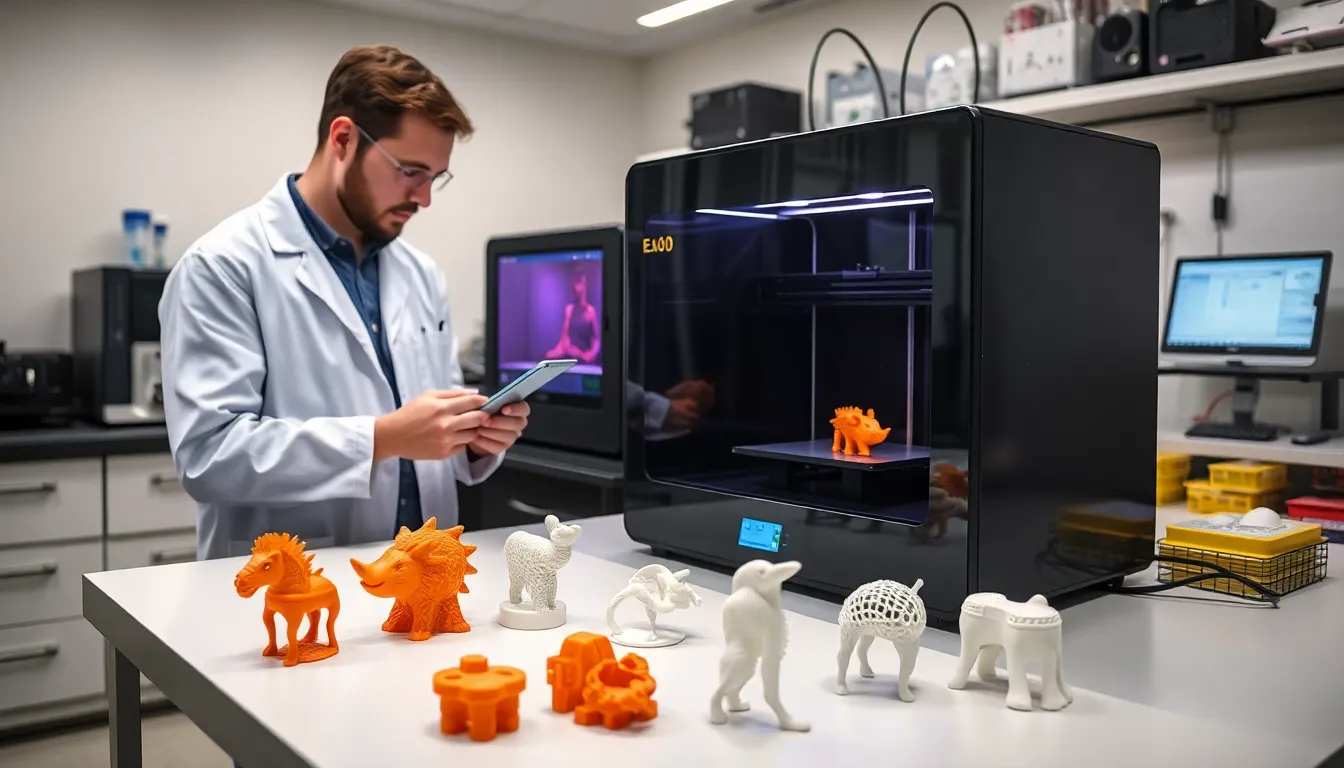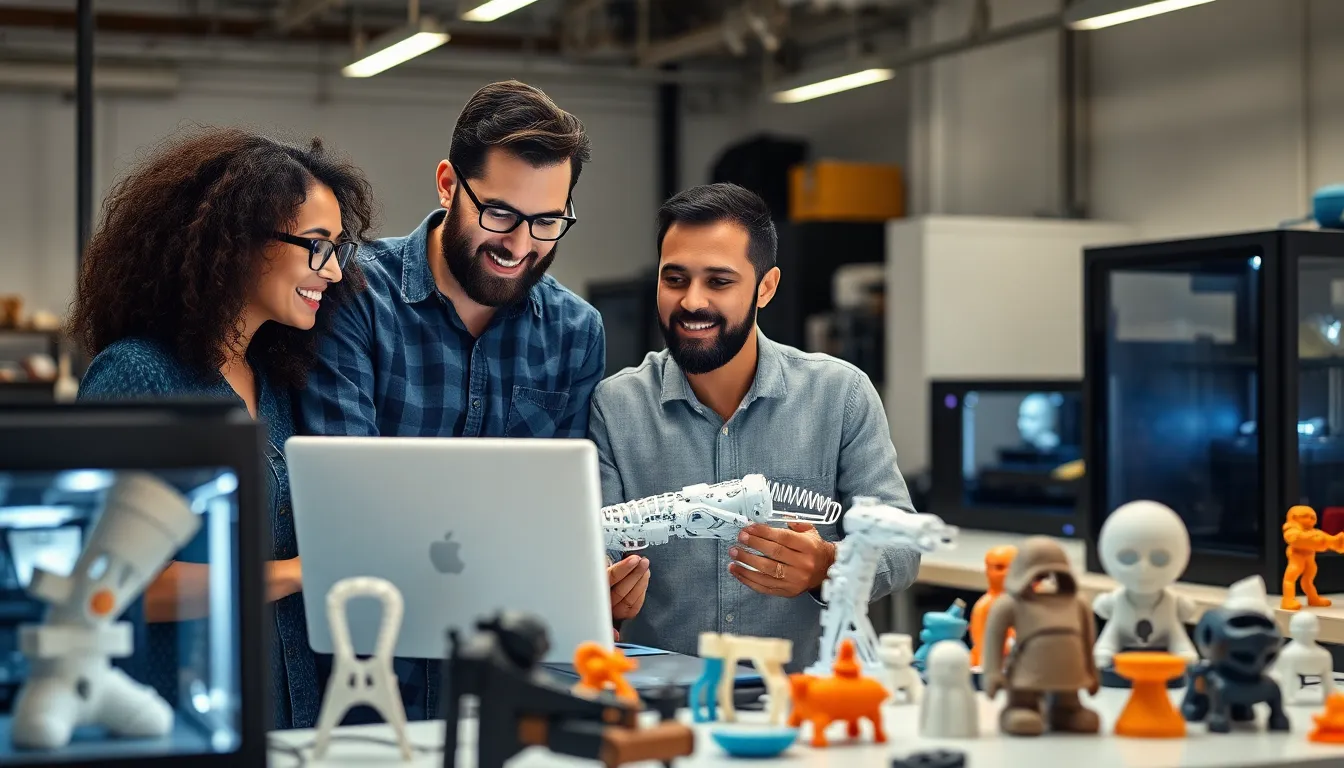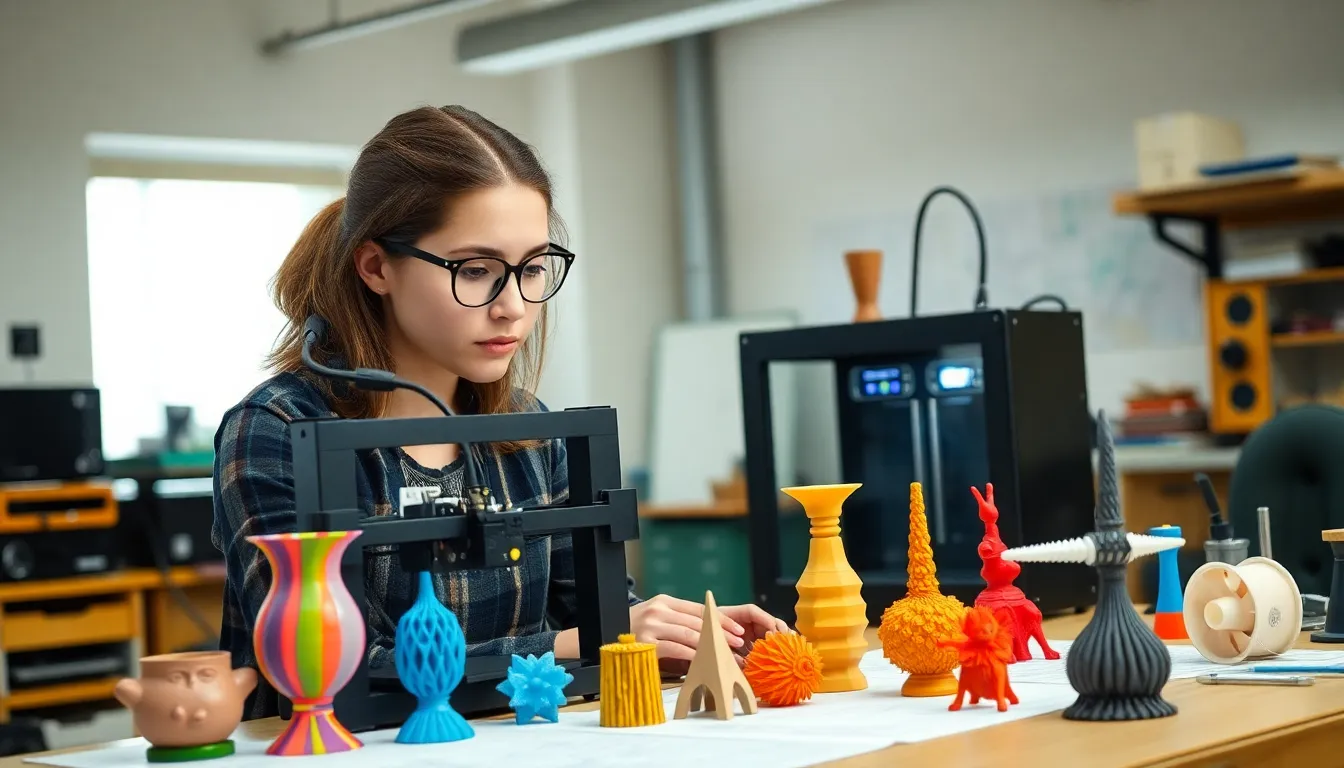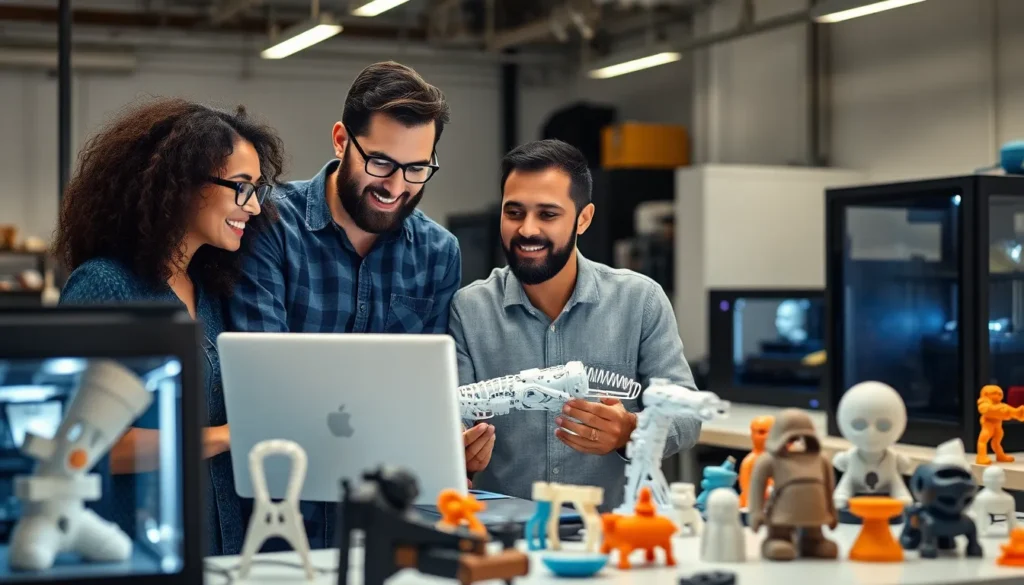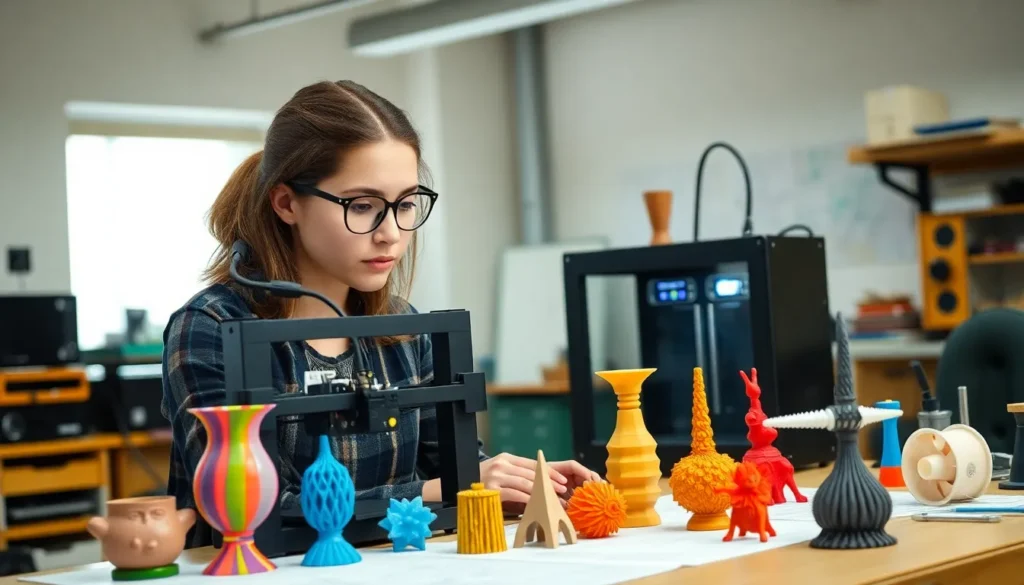The world of 3D printing is evolving at an astonishing pace, reshaping industries and redefining what’s possible in manufacturing and design. From intricate prototypes to life-saving medical devices, these innovations are pushing the boundaries of creativity and functionality. As technology advances, the applications of 3D printing continue to expand, offering solutions that were once confined to the realm of imagination.
Recent breakthroughs have introduced new materials and techniques that enhance precision and efficiency. With the ability to create complex structures and reduce waste, 3D printing is not just a trend; it’s a game-changer. This article delves into the latest innovations in 3D printing, highlighting how they’re transforming various sectors and paving the way for a more sustainable future.
Table of Contents
ToggleOverview of 3D Printing Innovations
3D printing technology has experienced remarkable advancements, significantly changing how industries operate. New materials enhance functionality and expand capabilities, leading to stronger and lighter products. Innovations include bioprinting, allowing for the creation of living tissues, and the development of metal 3D printing, enabling precise manufacturing of complex components.
Innovative techniques such as continuous liquid interface production (CLIP) improve print speed and accuracy. CLIP utilizes a specialized resin that hardens when exposed to light, drastically reducing production timelines. This advancement benefits sectors like automotive and aerospace, where efficiency is crucial.
The introduction of multi-material printing allows simultaneous use of different substances. This capability fosters the creation of parts with varied properties in a single print, providing tailored solutions for medical devices and consumer products.
Sustainability plays a pivotal role in ongoing advancements. Eco-friendly materials, derived from renewable resources, reduce environmental impact. Processes that minimize waste further promote sustainable manufacturing practices.
3D printing’s ability to create customized solutions tailored to specific needs proves revolutionary. Industries increasingly adopt the technology for on-demand manufacturing and localized production, minimizing supply chain disruptions. The continuous evolution of 3D printing solidifies its role as a key player in the future of manufacturing and design.
Recent Breakthroughs in 3D Printing
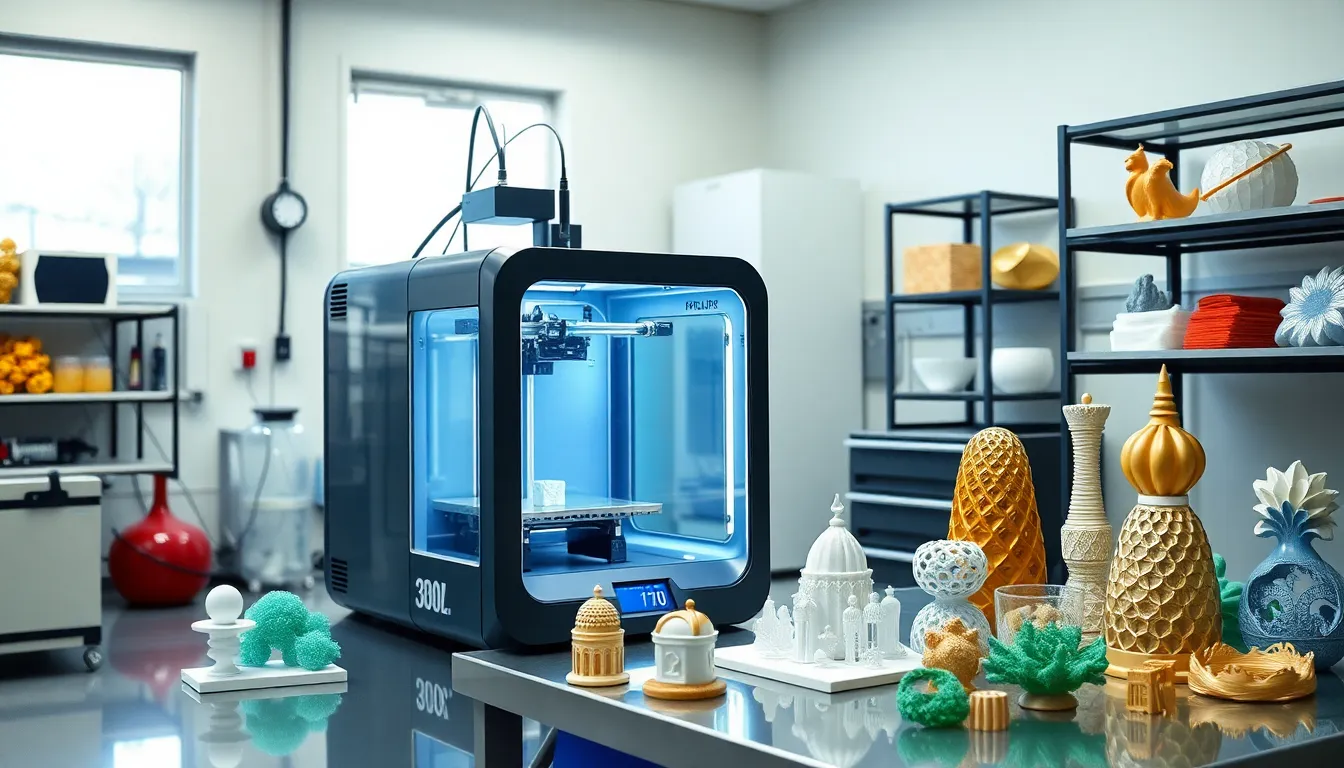
Innovations in 3D printing technology continue to emerge, significantly enhancing its applications across various fields. The focus on material advancements and novel printing techniques shapes the future of this transformative technology.
Material Advancements
Innovative materials have expanded the possibilities of 3D printing. Researchers developed bio-based polymers that produce biodegradable objects, allowing for sustainable practices in manufacturing. Metal alloys, such as titanium and aluminum, enable stronger and lighter components for aerospace and automotive applications. Additionally, the emergence of smart materials, which respond to environmental stimuli, is paving the way for dynamic structures in wearable technology and robotics.
Printing Techniques
New printing techniques have greatly improved the quality and efficiency of 3D printing. Continuous Liquid Interface Production (CLIP) allows for rapid layer formation, reducing production time while enhancing surface precision. Selective Laser Sintering (SLS) offers robust solutions for complex geometries, especially in industrial applications. The introduction of multi-material printing techniques enables the integration of diverse material properties, leading to innovative designs in healthcare and consumer electronics. These advancements illustrate how 3D printing techniques can adapt to meet increasingly specialized demands.
Applications of 3D Printing Innovations
3D printing innovations span diverse sectors, transforming traditional practices and enhancing creative solutions. Key applications include healthcare, aerospace, automotive, fashion, and art.
Healthcare Industry
3D printing plays a crucial role in healthcare, enabling the production of custom implants, prosthetics, and surgical instruments. Innovative methods, such as bioprinting, allow for the generation of living tissues, potentially revolutionizing transplant options. Custom-fit prosthetics reduce costs and improve patient outcomes, and personalized surgical guides facilitate precise procedures. Furthermore, advancements in biocompatible materials enhance the safety and longevity of medical devices.
Aerospace and Automotive
Aerospace and automotive sectors benefit from 3D printing’s ability to create lightweight, complex parts that boost efficiency and performance. Companies utilize metal 3D printing for components like engine parts and structural elements, ensuring precision while minimizing material waste. Rapid prototyping accelerates design iterations, allowing engineers to test and validate concepts quickly. The use of 3D-printed tooling streamlines production lines, reducing time-to-market for new vehicle models and aircraft designs.
Fashion and Art
Fashion and art industries leverage 3D printing to push the boundaries of creativity and customization. Designers produce intricate garments and accessories, often incorporating unique patterns and materials that traditional methods can’t replicate. Artists create sculptures and installations with precise detail, exploring new forms and aesthetics. The capacity for on-demand production encourages sustainable practices, reducing overproduction and promoting personalized fashion experiences.
Future Trends in 3D Printing
3D printing technology is on the cusp of transformative advancements shaping various sectors. Emerging trends indicate significant growth in bioprinting, enabling the fabrication of intricate living tissues and organs. Bioprinting’s expansion promises advancements in personalized medicine, from organ transplants to drug testing.
Metal 3D printing continues to evolve, offering high precision in manufacturing complex mechanical parts. Industries employing lightweight metals, such as titanium and aluminum alloys, benefit from enhanced fuel efficiency and reduced manufacturing costs. An increased adoption of this technology is evident in aerospace applications, where weight reduction is pivotal.
Sustainability in 3D printing remains a vital focus. Innovations in eco-friendly, bio-based materials aid the creation of biodegradable products, minimizing environmental impact. Additionally, closed-loop systems are being developed to recycle unutilized materials, further promoting sustainable practices.
Smart materials represent a significant leap, responding dynamically to external stimuli. The integration of these materials with 3D printing can lead to groundbreaking developments in fields like robotics and wearables. Real-time adaptability in designs offers customization not previously achievable.
Automation also plays a key role in the future of 3D printing. Implementation of artificial intelligence in design processes streamlines workflows and enhances accuracy. Predictive analytics may optimize production schedules and reduce lead times in manufacturing.
Custom on-demand manufacturing models will gain traction, particularly in consumer products. Localized printing capabilities enable rapid creation of tailored items, reducing storage needs and improving supply chain efficiency. The convergence of 3D printing with IoT technology fosters smart factories where real-time data shapes production decisions.
The collaborative efforts between various disciplines will lead to innovative 3D printing applications. Cross-industry partnerships will facilitate advancements in healthcare, automotive, and consumer electronics. The future holds promise as 3D printing continues to redefine traditional manufacturing and design methodologies.
Challenges Facing 3D Printing Innovations
3D printing innovations encounter several challenges that impact their broader adoption and application. The following key difficulties arise:
- Material Limitations: Many materials suitable for 3D printing lack the required properties for specific applications. Strength, heat resistance, and flexibility are often inadequate compared to traditional materials.
- Regulatory Hurdles: In industries like healthcare and aerospace, strict regulations govern material safety and product reliability. Navigating these regulations complicates the implementation of 3D printing technologies.
- Intellectual Property Concerns: The ease of copying designs raises significant intellectual property issues. Protecting unique designs from infringement poses difficulties for creators and businesses.
- Production Speed: Current 3D printing techniques may not match the speed of traditional manufacturing methods. Production speed limits the scalability of 3D printing in mass production contexts.
- Skill Gaps: Significant knowledge gaps in 3D printing technology hinder its adoption. Users require specialized training in software and hardware, limiting access to expertise.
- Post-Processing Needs: Many 3D printed items require extensive post-processing to achieve the desired finish and functionality. This extra step adds time and cost to production.
- Cost of Equipment: Advanced 3D printing machines, especially those designed for metal printing or multi-material printing, remain expensive. The high upfront investment dissuades smaller companies from adopting the technology.
Addressing these challenges is crucial for maximizing the potential of 3D printing innovations across various industries.
The landscape of 3D printing is evolving rapidly with innovations that promise to reshape industries. As new materials and techniques emerge they unlock unprecedented possibilities in design and manufacturing. The focus on sustainability and customization highlights the technology’s potential to meet modern demands while addressing environmental concerns.
With ongoing advancements in bioprinting and smart materials the future of 3D printing looks bright. Collaborative efforts across sectors will further drive creative solutions and redefine traditional practices. While challenges remain the commitment to overcoming these obstacles will ensure that 3D printing continues to play a pivotal role in shaping the future of various fields.

